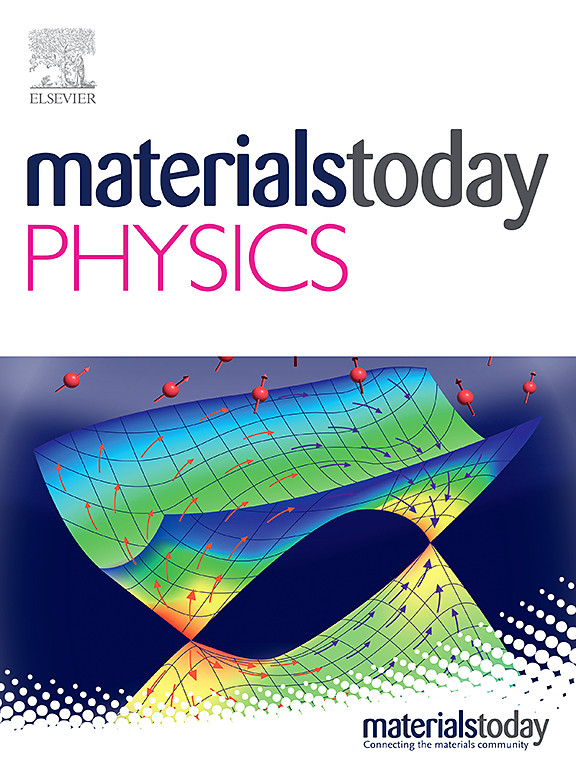揭示电流冲击下基于 Bi2Te3 的微型热电器件的界面降解现象
IF 10
2区 材料科学
Q1 MATERIALS SCIENCE, MULTIDISCIPLINARY
引用次数: 0
摘要
微型热电器件(micro-TED)为物联网和电子热管理提供了巨大的潜力。然而,它们在高电流密度下的可靠性面临挑战。本研究阐明了基于 Bi2Te3 的微型热电器件在电流冲击下的失效机制。实验结果表明,在 1800 A/cm2 的高电流密度下,micro-TED 的内阻增加了 12.9% 至 2.034 Ω。此外,随着施加到 micro-TED 的导通/关断电流频率的增加,电阻增长率从慢速功率循环时的 0.764 mΩ/h 跃升到快速功率循环时的 2.328 mΩ/h。这表明更高的循环频率会加剧器件的降解。原位 TEM 分析表明,电流引起的元素扩散和电应力释放导致 Bi2Te3 材料内部形成 NiTe2 纳米颗粒和晶间裂缝。这些结果表明,界面降解和随后的晶粒分层是电流冲击下微 TED 失效的主要原因。这些发现强调了在微型 TED 设计中考虑电应力对提高大功率应用的可靠性和性能的重要意义。本文章由计算机程序翻译,如有差异,请以英文原文为准。
Revealing interfacial degradation of Bi2Te3-based micro thermoelectric device under current shocks
Micro thermoelectric devices (micro-TEDs) offer great potential for IoT and electronic thermal management. However, they face challenges with reliability under high current densities. This study elucidates the failure mechanisms of Bi2Te3-based micro-TEDs subjected to current shocks. Experimental results indicate that at a high current density of 1800 A/cm2, the internal resistance of micro-TEDs increased by 12.9 % to 2.034 Ω. This led to a 52.0 % decrease in maximum output power at a 20 K temperature difference, dropping to 1.53 mW. Additionally, as the frequency of ON/OFF current applied to micro-TED increases, the resistance growth rate jumped from 0.764 mΩ/h for slow power cycling to 2.328 mΩ/h for fast power cycling. This indicates that higher cycling frequencies exacerbate the degradation of the device. In-situ TEM analysis revealed that current-induced elemental diffusion and electrical stress release led to the formation of NiTe2 nanoparticles and intergranular fractures within the Bi2Te3 materials. These results indicate that interfacial degradation and subsequent grain delamination are primary causes to micro-TED failure under current shocks. These findings underscore the significance of considering electrical stress in micro-TED design to enhance reliability and performance for high-power applications.
求助全文
通过发布文献求助,成功后即可免费获取论文全文。
去求助
来源期刊

Materials Today Physics
Materials Science-General Materials Science
CiteScore
14.00
自引率
7.80%
发文量
284
审稿时长
15 days
期刊介绍:
Materials Today Physics is a multi-disciplinary journal focused on the physics of materials, encompassing both the physical properties and materials synthesis. Operating at the interface of physics and materials science, this journal covers one of the largest and most dynamic fields within physical science. The forefront research in materials physics is driving advancements in new materials, uncovering new physics, and fostering novel applications at an unprecedented pace.
 求助内容:
求助内容: 应助结果提醒方式:
应助结果提醒方式:


